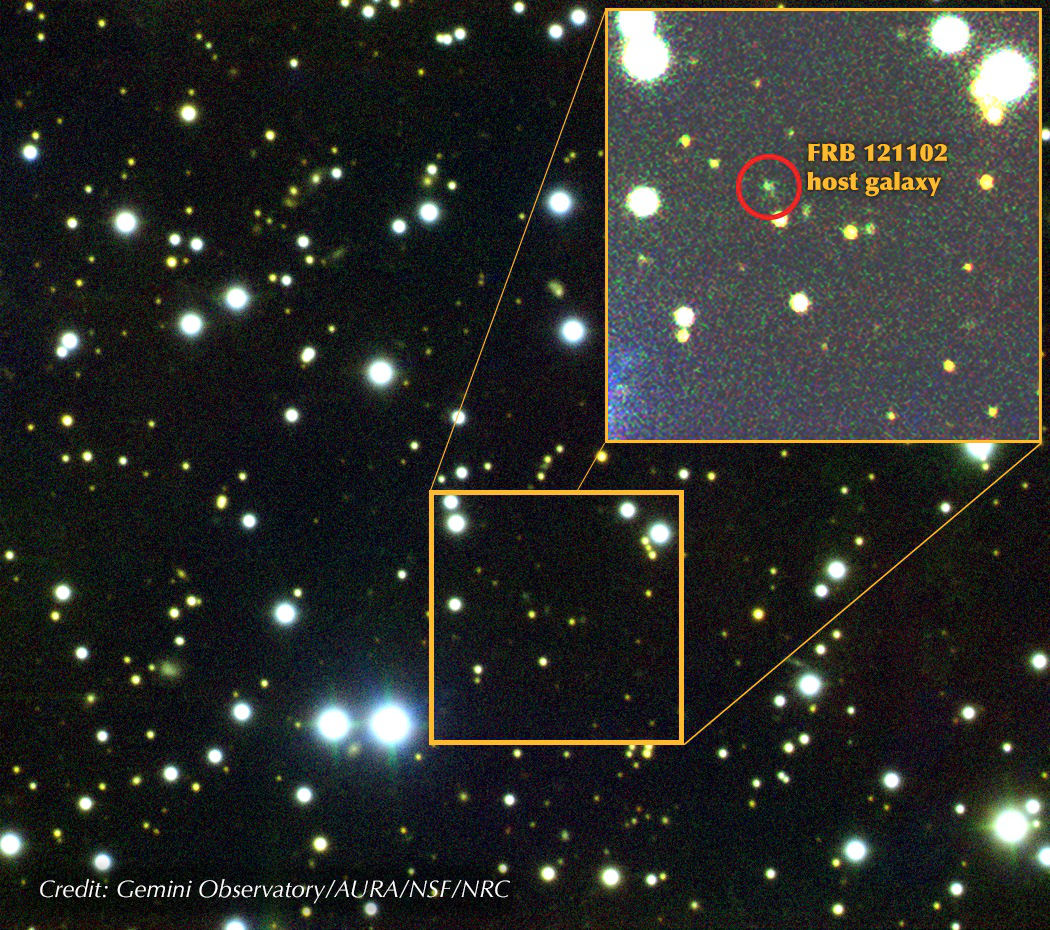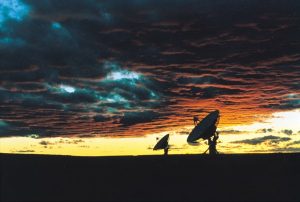Scientists have long scratched their heads over a mysterious explosion of radio energy coming from somewhere in the vast night sky and lasting only milliseconds each time. Only 18 such instances have been recorded thus far since their discovery in 2007. And of the 18, just one named FRB 121102 has been heard repeatedly and coming from the same place.
Now an international team of astronomers have pinpointed the fast radio burst (FRB) to a distant dwarf galaxy 3 billion light-years away in the constellation Auriga. It’s a huge jackpot for scientists and gives us some clue as to what might be causing these bursts.
“The host galaxy for this FRB appears to be a very humble and unassuming dwarf galaxy, which is only about 1% of the mass or our Milky Way Galaxy,” said Shriharsh Tendulkar of McGill University in Montreal, Canada.

Having lacked any details about these bursts and their origins, the public’s imagination ran wild with competing ideas and very little consensus. That they could be coming from extraterrestrial lifeforms was of course put forth. Others looked to observed natural phenomena for their theories such as black holes and neutron stars. Some wondered if they could be coming from cataclysmic events in space.
Now we know that at least one of these bursts is traveling to us from a very far distance. That information alone sheds a lot of light about their possible causes.
“These radio flashes must have enormous amounts of energy to be visible from over 3 billion light-years away,” said lead author Shami Chatterjee, Cornell senior research associate in astronomy.
And with the location uncovered, scientists can focus their attention on looking for the power source behind these bursts. Chatterjee offered a couple theories, including the possibility it could be a magnetar – a type of neutron star with a huge magnetic field. Or it could be an active galactic nucleus of a dwarf galaxy. But the fact remains, we just got one step closer to understanding one more of the universe’s vast trove of mysteries.











